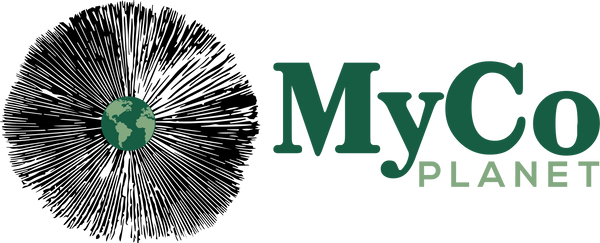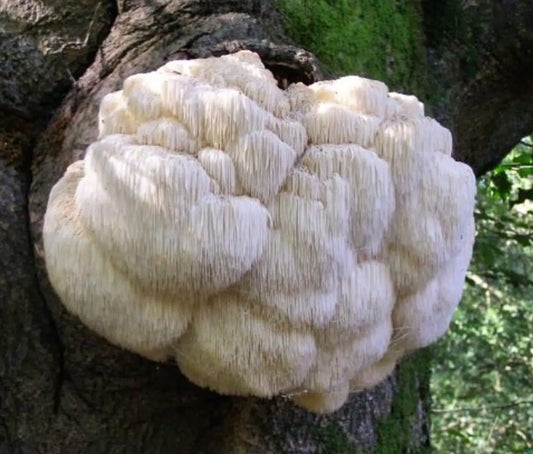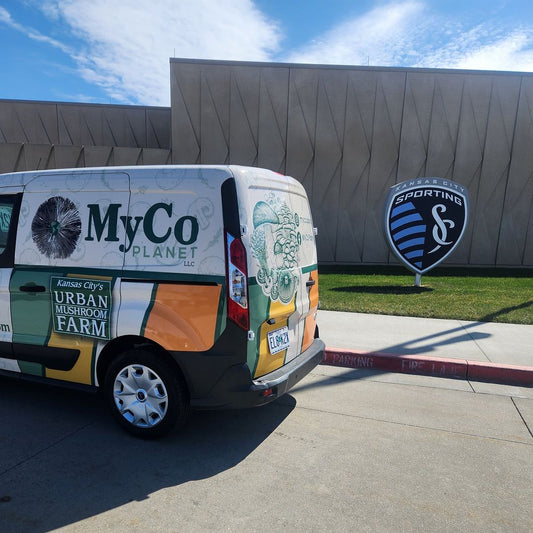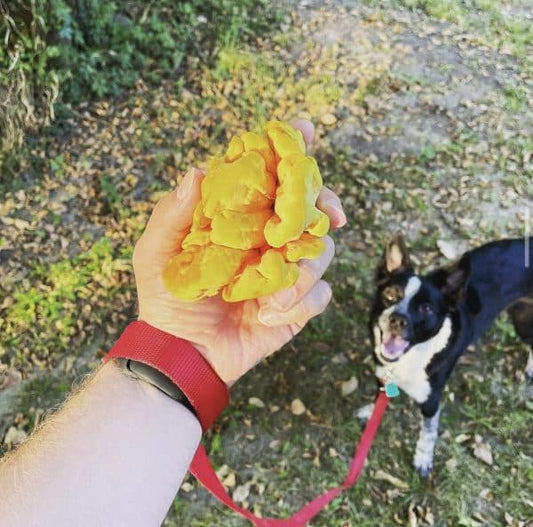In the wild, mushrooms typically grow on dead wood, straw, and manure, among other things. However, when cultivating mushrooms, most varieties can be grown on a wide variety of food sources. This article will explore the best substrates for oyster, shiitake, lion’s mane, and psilocybe mushrooms.
What Are the Best Mushroom Substrates?
When cultivating mushrooms, the Master’s Mix is one of the best mushroom substrates, as nearly all wood-loving mushrooms can grow on it and it produces the biggest flushes.
What Is a Mushroom Substrate?
A mushroom substrate is a food source that contains nutrients and water that mycelium needs to grow and expand.
Best Mushroom Substrates
There are an infinite number of suitable mushroom substrates, but the best mushroom substrates are high in carbon, in the form of cellulose, hemicellulose, and lignin.
Typically, mushrooms need at least 0.2% nitrogen content to properly grow, but they prefer anywhere between 1% and 2% nitrogen content.
A good mushroom substrate contains calcium, magnesium, potassium, sulfur, and phosphorus.
A mushroom substrate should be between a pH of 5 and 6.5.
Mycelium growth requires high concentrations of water, somewhere between 50% and 70% moisture content.
An ideal mushroom substrate should contain fibrous material that promotes air exchange. Mushroom substrates that are compacted down either won’t grow properly or will grow slowly because they don’t have plentiful access to oxygen.
A mushroom substrate shouldn’t have other bacteria or fungi living in it, resulting in competition.
Sterilizing Or Pasteurizing A Mushroom Substrate
Not all mushroom substrates need to be sterilized or pasteurized, but most do. The mushroom substrates that don’t have to be sterilized include coco coir, hardwood logs, and sawdust wood pellets.
There are a number of options to kill off the bacteria and fungus contained in a mushroom substrate before inoculating that substrate with the fungus we want to grow.
Pasteurizing Mushroom Substrates
Hot Water Bath Pasteurization
Hot water bath pasteurization is the process of placing a mushroom substrate in water between the temperatures of 160ºF and 185ºF for 1 to 2 hours.
Cold Water Lime Pasteurization
Cold water lime pasteurization involves using hydrated lime, an alkaline material, in cold water for around 24 hours. Allowing the mushroom substrate to sit in this lime water increases the pH, killing off bacteria and fungi.
Cold Water Ash Pasteurization
Another option is to use cold water ash pasteurization to kill off bacteria and fungi. The idea is the same as cold water lime pasteurization because ashes are also alkaline.
Fermenting Mushroom Substrates
An alternative to pasteurizing involves fermenting mushroom substrates. Fermenting kills off aerobic organisms, as anaerobic organisms break down this substrate. This renders fermented mushroom substrates suitable for inoculation, as all competing organisms were killed off.
To ferment a mushroom substrate like straw, leave it underwater in a bucket for a week. If you want to ferment an entire straw bale, use a 55-gallon barrel and fill it with water, leaving it for 2 weeks to ferment.
The problem with fermenting mushroom substrates, like straw, is that it smells absolutely putrid, and in my experience, not worth the time and odor.
Sterilizing Mushroom Substrates
To kill bacteria and fungi, you can either sterilize a mushroom substrate using an autoclave, or pressure cook it for 2 1/2 hours at 15 psi.
Many believe that placing a mushroom substrate in boiling water is enough to sterilize it, but that is not true. While boiling water may be enough for some applications, if your goal is to completely sterilize your mushroom substrate, you must use a pressure cooker or autoclave.
People who don’t have access to an autoclave or pressure cooker often place their mushroom substrate in the oven and leave it for 2 hours at 250°F. While this can work to sterilize the mushroom substrate, it will also dry it out and may even burn it. Oftentimes, people who use the oven to sterilize their mushroom substrate add sterilized, distilled water to the substrate to add moisture back into the dried-out material.
Growing The Mycelium

Mushroom substrates are typically packed into mushroom grow bags, Mason jars, or buckets. In any case, the idea is the same, give the mycelium a container that maintains high levels of humidity and air exchange.
If you are going from spore to mycelium, it will take weeks and sometimes months for the mycelium to completely encompass the substrate and be ready for the fruiting chamber. If you are mixing in a grain spawn that is already developed, the process is faster.
Best Mushroom Substrates
Straw
Straw is an excellent mushroom substrate for oyster mushrooms, but not many other mushrooms can grow on straw alone. Straw is a great substrate for oyster mushrooms because it’s inexpensive, easy to find, and easy to use.
First, start by cutting up the straw into 3-inch pieces and then pasteurize the straw in near-boiling water for 1 hour.
Next, drain the water out of the straw so it reaches Field Capacity, meaning only a couple of drops of water leak out.
To cut up straw into small pieces, place it in a 55-gallon drum and use a weed wacker.
To pasteurize the most straw at one time, fill a 55-gallon barrel with near-boiling water and place the straw in pillowcases so they can be easily submerged and removed.
If you don’t want to use hot water to pasteurize the straw, you can also use cold water lime pasteurization, as discussed earlier. Typically, 175 g of hydrated lime is added to 100 liters of water and the straw is left to soak in it for 15 hours.
Coffee Grounds
Coffee grounds are another great mushroom substrate for oyster mushrooms. If they were discarded within 24 hours after brewing coffee, the advantage of using coffee grounds is that they are already pasteurized. Typically, using only coffee grounds to grow oyster mushrooms is only applicable on the small scale, as coffee grounds tend to compact easily, reducing air exchange.
If you want to fill large grow bags with coffee grounds, mix in at least 20% straw to reduce compaction. Many coffee stores will save their coffee grounds for you if you ask, meaning you can get a large amount of substrate material for free or very cheaply. If you are going to be using straw and coffee grounds substrate, remember to pasteurize the straw before inoculating it.
To make the perfect substrate for mushroom cultivation, mix 6 parts pasteurized straw, 3 parts coffee grounds, and 1 part mushroom spawn.
Logs
Shiitake and lion’s mane, as well as oyster mushrooms, grow well on hardwood logs. From a natural perspective, hardwood logs are one of the best mushroom substrates for wood-loving mushrooms.
Nearly any hardwood log will do from beech, poplar, maple, oak, birch, elm, alder, and cottonwood. When selecting hardwood logs, look for ones that are between 4 and 6 inches in diameter and cut them into 4 ft long pieces.
Select hardwood logs to grow mushrooms that aren’t completely new, but that aren’t being overrun by fungi. Typically, logs that are a couple of months old are the best choice.
Using logs as a mushroom substrate is advantageous, as they don’t have to be sterilized or pasteurized before adding in mushroom spawn.
To inoculate logs with mushroom spawn, drill holes into the logs around 4 to 6 inches deep, spacing them around 3 inches apart throughout the entire log. Generally, a 1/2-inch drill bit is the best option for making these holes. After placing the mushroom spawn plug into each hole, gently tap them in with a hammer, and seal them up with wax.
At that point, make sure the logs remain wet and leave them sit for months until you start to see mushrooms develop.
Hardwood Pellets

Hardwood pellets make an excellent mushroom substrate. Hardwood pellets can be purchased in bulk for grills and stoves. Hardwood pellets don’t need to be sterilized, as they were already sterilized when they were turned from sawdust into pellets. Typically, 10 cups of hardwood pellets are mixed with 2.8 liters of water before being inoculated with mushroom spawn.
For a more nitrogen-rich mushroom substrate, 2 1/2 cups of wheat or oat bran is often added to hardwood pellets. However, this mixture must be sterilized before using it. This mix can be used to grow nearly any type of wood-loving mushroom.
A Mix of Mushroom Substrates
One way to increase yields is to supplement the substrate with something like bran or seed derivatives. Typically, start with 5% supplements within the base substrate. Then, experiment with that recipe and note the yields.
Mixing 50% hardwood sawdust, 30% wood chips, 18% bran, and 2% gypsum is a popular mushroom substrate for wood-loving mushrooms. This substrate needs to be sterilized before use.
A mix of mushroom substrates, something like 40% straw, 30% coffee grounds, and 20% sawdust pellets are mixed with 10% grain spawn. This is an excellent option for growing oyster mushrooms.
Manure
Mushrooms growing on manure is about as old as time itself. Typically, psilocybe mushrooms and white button mushrooms prefer manure as their substrate material.
A blend of 1 part coco coir and 2 parts manure is the ideal mushroom substrate for manure-loving mushrooms, with enough water to carry it to Field Capacity. A manure-based substrate must be sterilized before use.
Rye Berries
A mix of coco coir and rye berries is the preferred method for growing psilocybin mushrooms in a mushroom grow bag. Rye berries are able to absorb more water than any other grain, increasing the moisture content available to the mycelium.
To prepare rye berries, soak them in water overnight, then drain and rinse them. Add the berries to a mushroom grow bag and seal it off. Sterilize the bag in a pressure cooker for 2 1/2 hours at 15 psi. After cooling down to room temperature, inoculate the rye berries with spores.
Cardboard
Surprisingly, even cardboard makes an excellent mushroom substrate for oyster mushrooms. Since cardboard is free, excellent at holding in moisture, and facilitates decent air exchange, it’s at least worth trying this mushroom substrate to see it in action.
To prepare cardboard, simply soak it in near-boiling water for an hour, allow it to cool down, and squeeze out most of the water. Now, layer oyster mushroom stems or spawn in between sheets of cardboard and watch it grow. Water the cardboard when it starts to dry out.
A combination of cardboard and coffee grounds is an even more nutritious oyster mushroom substrate.
Master’s Mix

Let’s save the best for last. The Master’s Mix is the result of an experiment by TR Davis from Earth Angel Mushrooms, who mixed together equal parts of hardwood sawdust and soybean hulls. This formula was an instant success, as it grew more mushrooms on the first flush than any other mushroom substrate. This is why we use the Master’s Mix in our mushroom grow kits, as it offers the highest yields.
Typically, 1 lb of soybean hulls is mixed with 1 lb of hardwood sawdust, along with 1.4 liters of water. After adding this mix into a mushroom grow bag, it should be sterilized in a pressure cooker for 2 1/2 hours at 15 psi.
The Master’s Mix is the best mushroom substrate for growing lion’s mane mushrooms, shiitake mushrooms, and oyster mushrooms.
What To Do With Used Up Substrate?
After a mushroom substrate has been used, it makes an excellent compostable material. Typically, mix it with other materials on your existing compost pile and use it to feed your plants.
What Substrate Should I Use For Each Type of Mushroom?
Oyster Mushrooms

Oyster mushrooms can colonize on a wide range of substrates. Typically, oyster mushrooms grow well on straw, while not many other mushrooms prefer straw as a substrate. Since straw is extremely inexpensive and widely available, using only straw for growing oyster mushrooms is sufficient.
Oyster mushrooms are one of the only mushroom species that can be grown on coffee grounds exclusively. Coffee grounds combined with straw are best, as it increases aeration properties.
One exception is king oyster mushrooms, as it prefers to grow on wood substrates instead of straw. The king oyster mushroom is notable because it has the highest concentrations of ergothioneine, a strong antioxidant that is critical to mental health, found mainly in mushrooms.
An excellent substrate for king oyster mushrooms includes hardwood sawdust and roughly 10% wheat bran, a moisture content of around 70%, and a pH of 6.5.
Read more about oyster mushrooms.
Shiitake Mushrooms
Shiitake mushrooms are typically grown on logs, but many growers are now using sawdust as the preferred substrate. The reason for this is that bags of sawdust are easier to deal with than logs of wood.
A mix of hardwood sawdust with 5% wheat bran is an excellent substrate for shiitake mushrooms. Ideally, set the moisture content to around 55% and the pH to 6.5.
Shiitake mushrooms also grow well on the Master’s Mix, but even better on a mix of 70% oak and 30% wheat middling, which is what we use.
Lion’s Mane Mushrooms
Lion’s mane mushrooms can be grown on logs and hardwood sawdust. However, lion’s mane mushrooms grow best on Master’s Mix. Read more about lion’s mane mushrooms.
The Best Mushroom Substrates – Master’s Mix
For our grow kits, we use the Master’s Mix for lion’s mane and oyster mushrooms. For Shiitake, we use 70% oak and 30% wheat middling.



